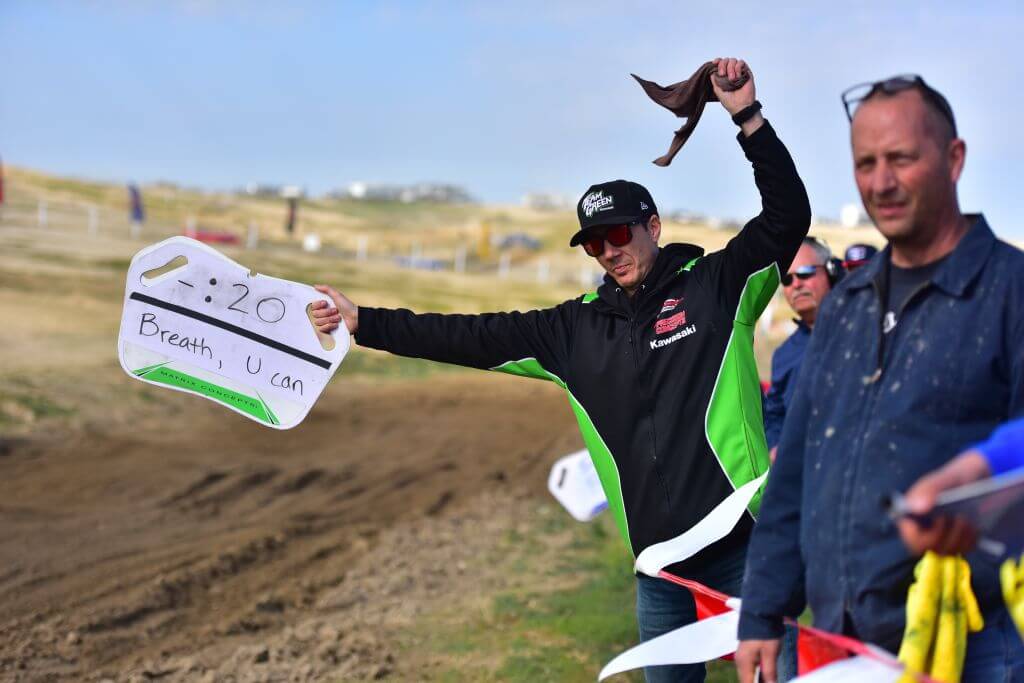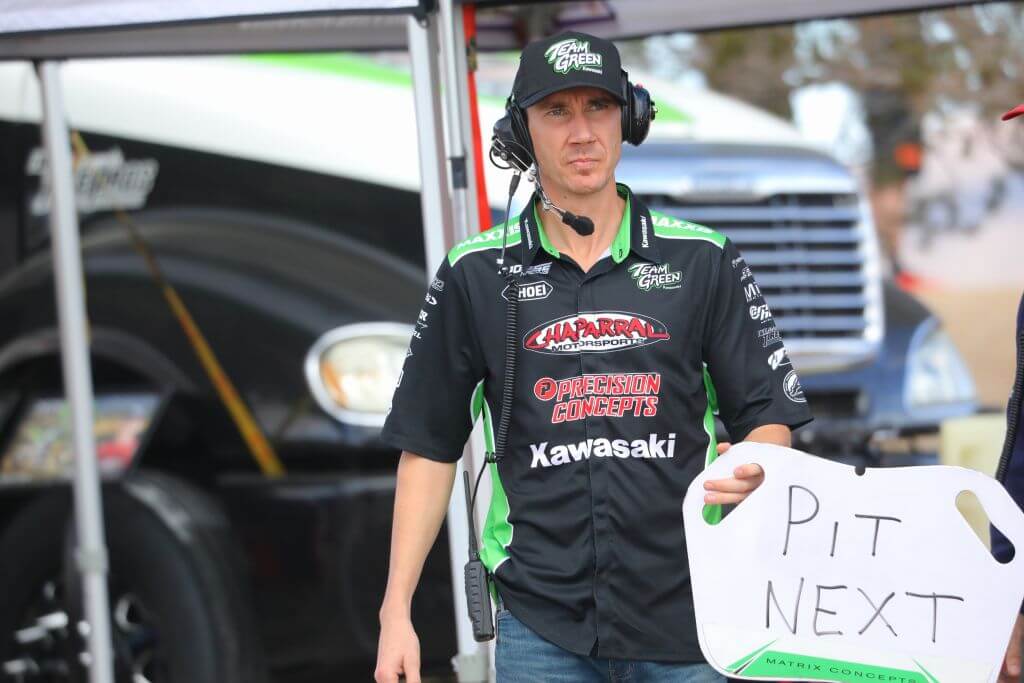Racer Profile: Robby Bell
We recently sat down and chatted with championship racer Robby Bell. From countless wins and championships to a life altering injury, Bell no longer races professionally, but has continued to stay deeply involved in the sport that has completely shaped his life. We touch on his career, management of his race team, and how much family means to him. Off-Road Racer presents... Robby Bell
ORR: So tell us a little about yourself - Who is Robby Bell?
Robby Bell, 34 years old, originally from El Cajon, CA and now living in Menifee, CA. From a young age I loved watching Supercross and Motocross, and had the dream of racing professionally one day. When I turned 16, I told my dad I wanted to pursue racing, so we hit my first motocross race. Less than a year later (2002), I qualified for Loretta’s in the 125 C class. I went 2-2-DNS in the 125 C mod class at Loretta’s that year, after breaking my foot during the second moto—and I physically couldn’t get my swollen foot in the boot for the third moto; believe me, I tried. That was heartbreak because Jimmy Albertson went on to win the overall with a 1-1-4, so to watch him get 4th in the third moto when I couldn’t be out there to see what was possible for myself was gut wrenching!
Over the next couple years, I tried to continue the amateur motocross dream, racing World Mini and Loretta’s again in the B class, but it was difficult to get support and in 2004, after a serious ankle injury, I realized my chances were slim. Being a little burned out, my dad (who was building the bikes and setting up the suspension for American Honda Off-Road) took me out to a BIG 6 Grand Prix race at the old LACR Raceway. I finished second overall from the intermediate line in my first GP race and caught the eye of Johnny Campbell. He, with Bruce Ogilvie, did some brief vetting of my potential by taking me down to ride in Baja, then presented me with an offer to race for American Honda, and in 2005 I signed my first professional contract. Little did they know my plan was to use the support from Honda to help pursue my motocross career on the off weekends.
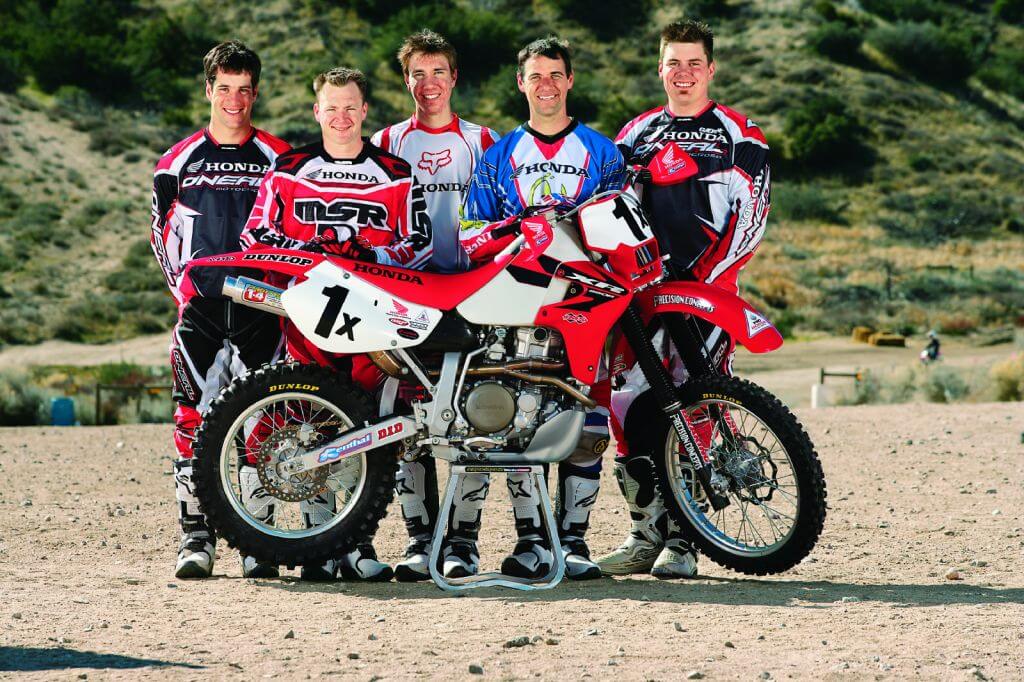
The joke was on me with my secret plan to fund my motocross dream, because I totally fell in love with the off-road side of the sport—especially Baja and the logistics and mental aspect of that style of racing. My first year was rough, as I was a 6’0”, 150lb string bean on the big ol’ XR650, racing Baja and BITD. But Bruce saw the long game that closed-course grand-prix racing would be my future. In 2006 I chased the full WORCS series for Honda on a 450, finishing 7th with a couple flashes of potential, while still racing Baja and select BITD races. Kendall Norman was my teammate from 2005-2008 and we were somewhat Guinea pigs for the testing and development of the CRF450X. We won the 1X plate in 2006, though we didn’t win the crown jewel of the Baja 1000 (I crashed at mile 40 and concussed myself, riding backward on the course for a small stretch, then Kendall later broke his hand, so I had to get back on the bike after my 330-mile stint, for 200 miles I’d never pre-ran before, at night…it was rough). After that year, Kendall and I went undefeated in Baja in 2007 and 2008 (with the help of Johnny Campbell, Steve Hengeveld and Quinn Cody at times), winning two more 1x titles and two Baja 1000’s. I also finished 3rd in the WORCS series in 2007 with a couple podium finishes and things were looking up in that series as well.
Unfortunately, in 2008, I’d hit a bit of a wall in the Grand Prix’s. Though I showed the speed to run up front, I didn’t have my body and fitness quite right, so my results dropped off. American Honda went private that year, becoming JCR Honda, and Johnny made the respectful decision of offering me a Baja-only contract moving forward. I wanted to focus on racing in the States, so I turned him down and after a short stint of practicing Supercross on Adam Chatfield’s track in Beaumont, in late-2008, and considering making a run at Supercross, I approached Kawasaki to garner support to continue racing WORCS.
2009 was the start of what has become an 11-year relationship with Team Green. From that first year through 2011, my domestic results didn’t improve too much, but I was fortunate to have the support of my dad, who kept giving me the opportunity to pursue racing. There were a couple cool opportunities in there too, like the Monster Energy, Wahoo’s Taco’s- backed Kawasaki effort that Bruce Penhall spearheaded to compete in the 2009 Baja 1000—we were so close to winning that year! Then, for 2012, THR Motorsports approached me to support a Baja, BITD and WORCS-based program.
2012 was a turning point in my career, as I really started to look at my diet thanks to a simple comment from Ryan Hughes that opened my eyes to diet’s role in performance. As I changed my diet (running a wide gamut, until settling on gluten-free, and later Paleo) my WORCS results began to improve. Plus, as a team with David Pearson and Steve Hengeveld, we were able to win the 2012 Baja 500, giving Kawi its first SCORE victory since 1996.
2013 was a high and low year. I was able to get both my first WORCS victory and championship, but it culminated with an awful personal experience at the Baja 1000 (from a really hard crash 7 miles into my section) combined with the loss of Kurt Caselli. At that point, I was on my game in the American-based Grand Prix’s, but pretty much over the risks of Baja, so I decided to quit racing down South. Then, the very next year in 2014, Ricky Brabec, Max Eddy and Steve Hengeveld (on a THR-backed Kawasaki team my dad was running) were in the points lead in SCORE heading into the Baja 1000. After many long heart-to-heart conversations with my wife, I decided to join the team for one final run in Baja, just to enjoy the experience on my own terms—not going into super-send mode and crashing again. We were able to win the Baja 1000 as a team that year, securing the 1X plate for Ricky and Kawasaki, and that was the official close to my Baja career. It couldn’t have ended better.
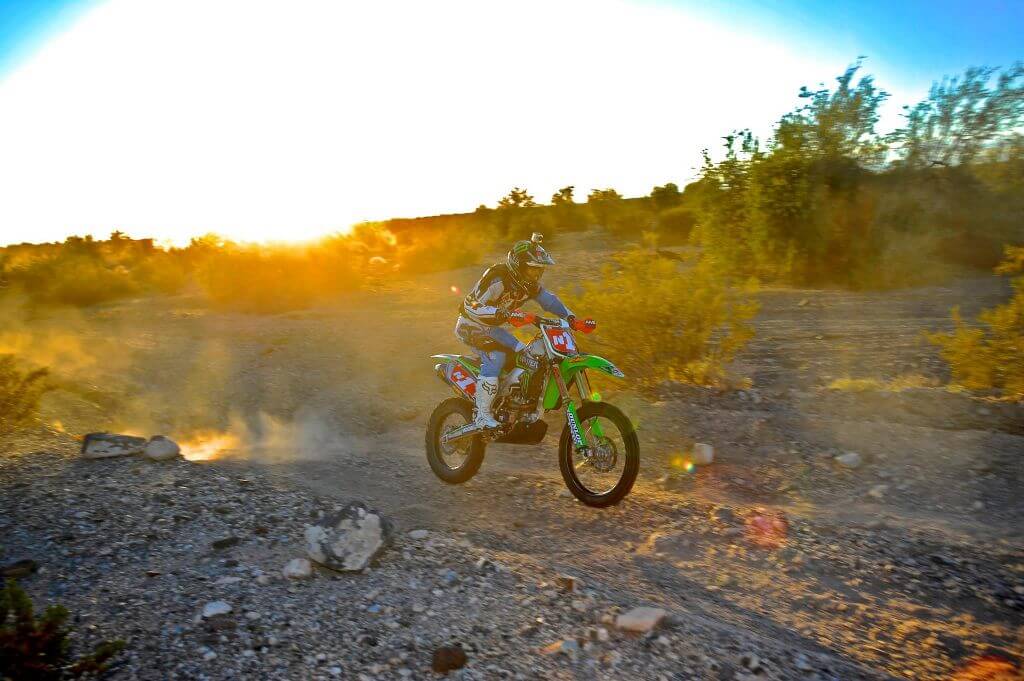
2015 was the best I’ve ever felt on a dirt bike. I was winning pretty much every race I was entering between WORCS, BIG 6 and BITD, doing a full Paleo diet plus intermittent fasting, going to CrossFit, and felt like I couldn’t be stopped. During the Summer, I was doing two-a-days at CrossFit while training on the dirt bike, and racing off-season races on the weekend. On July 12, I was asking too much of myself, racing 3 classes at a SoCal MX race at Glen Helen in 100-degree weather, on the back of a double-header at CrossFit the day before. I became overheated and slightly disoriented, confusing where I was on the MX track momentarily. I mistook the “scrub” single before the finish line table-top for the finish-line jump itself, hitting it way too fast and casing the face of the table-top. My chin came down on the cross-bar, where the bar pad ended, and blew my front teeth apart—I ended up losing 9 front teeth in total, plus a couple small jaw fractures. Coming back from that was tough, and though I was able to win the WORCS championship that year, it was the beginning of the end of my racing career.
I was able to win my third WORCS championship in 2016, though I did my best to throw it away by shattering my collarbone just before the season’s restart from the Summer break—and two weeks before the birth of my daughter. In 2017, I was finally putting my body back together, in a rhythm with juggling fatherhood and racing, and starting to feel shades of 2015 again, when 29 Palms BIG 6 happened. I passed from like 7th up to 1st place in the Pro race. My hands were pretty wrecked from the effort on the high-speed, choppy track, and on the last lap, I thought I caught a glimpse of Eric Yorba still just behind me (it turned out it was a lapper). Thinking I didn’t have much lead, I continued pushing the pace and lost the front end in a high-speed turn less than a mile from the finish line. In the crash, I was knocked out for something like 2 minutes and experienced an awful mid-back injury that effectively led me to the decision to retire from professional racing. I hadn’t really been 100% healthy for the entire first year of my daughter’s life and wanted to be to be there for my family in my best capacity, so I made the decision to transition into more of a managerial role.
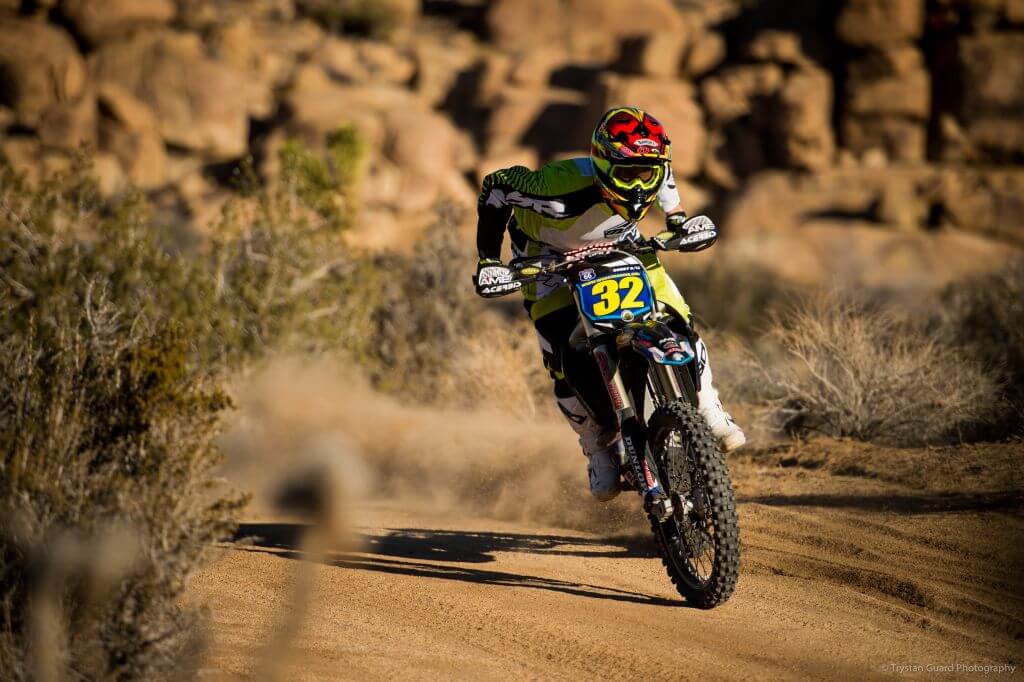
ORR: When did you begin riding, racing, and racing professionally? What were some of your first bikes?
I Began riding at 4 years old on a PW50. I raced the little bush-to-bush mini races in District 38 from 5 years old up through my early teens, racing a KX60 and CR80.
In 2001, at age 16, I raced my first real motocross race at Barona Oaks in the 125 C class on a 2001 CR125. That was the beginning of me taking racing more seriously.
2005 was my first professional year racing. I went on to earn 12 professional championships, including a few other pretty cool event victories and results:
- 3 - WORCS championships (2013, 2015, 2016)
- 4 - SCORE Open Pro MC championships (2006, 2007, 2008, 2014)
- 3 - SCORE Baja 1000 victories (2007, 2008, 2014)
- 4 - SCORE Baja 500 victories (2006, 2007, 2008, 2012)
- 4 - Best In The Desert Open Pro MC championships (2012, 2013, 2014, 2015)
- 2012 AMA District 37 BIG 6 West Coast Grand Prix champion
- 3 - 24 Hours of Glen Helen victories (2006, 2007, 2014)
- 4 - Lake Elsinore GP Harvey Mushman victories (2010, 2014, 2015, 2016)
- 20th overall at 2011 Hangtown AMA Motocross National, 17th-place first-moto finish
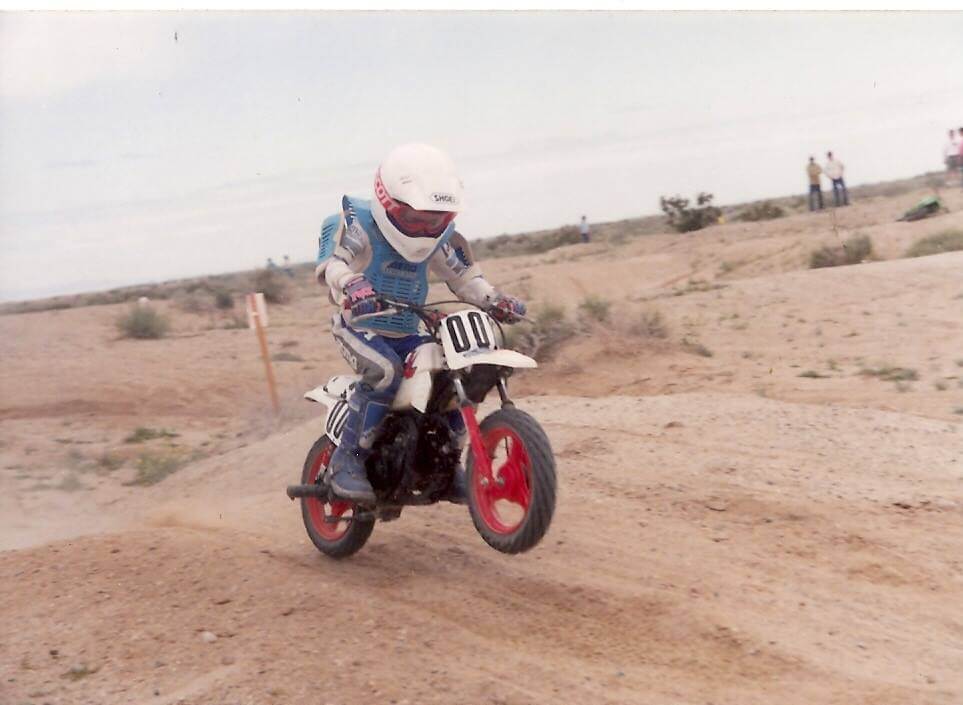
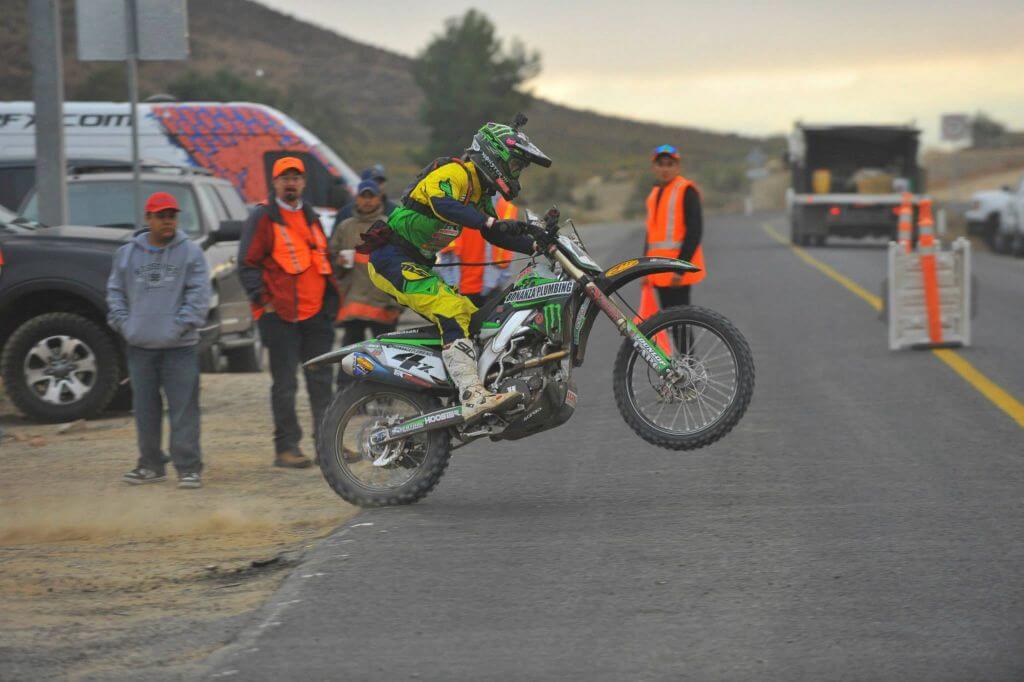

ORR: Explain some of the friendships and relationships you've built during professional racing?
I’ve made a ton of friends during my racing career. Ryan Abbatoye, my best man at my wedding, I met in 2005 when I first started racing WORCS. He actually didn’t like me at first for reasons we laugh about now, but we became fast friends (racing pun intended?) and are still close. Brenden Ritzman is another life-long friend I met while racing. I felt like I saw a deeper side of his personality than a lot of people and I miss the man-dates we used to have since he moved back up to Washington State. Justin Seeds is like a younger brother that I’ve seen mature and find his identity over the years. Jake and Meg Argubright are so much fun and love my family intensely. Sean and Pepper Reddish (former owners of WORCS) have become family and care so much for ours; likewise, Randy and Kellie Perry (current WORCS owners) are great people and care for my family so much. The Hengeveld’s are an amazing family that I’m close with. Though we don’t get together as much anymore, the Soule’s, the Achey’s and the Lanza’s are all great friendships that began in the racing days, which I cherish.
There are far too many friendships to list. That’s what’s cool about this industry, it’s full of people who are out pursuing and enjoying their passions and it’s easy to make friends in that atmosphere!

ORR: Explain a little about the move from Honda to Kawasaki
At the end of 2008, I didn’t have a great year in WORCS, which was my primary series in the States. Though Kendall and I had swept the SCORE series, I was wanting to make more of a name for myself domestically. 2008 was Johnny’s first year running the newly privatized JCR Honda program and he needed someone who could perform at a podium-level in WORCS. I wasn’t there at the time, so he offered me a Baja-only contract. We mutually parted ways at a Mexican restaurant in Perris, CA in the Fall of ’08 and I briefly entertained the idea of finally giving Supercross a go. I went in with a few guys to rent Adam Chatfield’s SX track in Beaumont, CA and trained there for a month or so. It was a cool experience, but I realized how expensive trying to race even a West-Coast SX calendar was going to be.
Previous to all that, I’d reached out to Kawasaki about a spot on the factory off-road team, but was a little late in the year to secure anything. Additionally, coinciding with my separation from Honda/JCR was my dad’s (with his company, Precision Concepts). My dad wanted to continue running a professional team, so we went to Kawasaki to see what the possibilities were for them supporting a private team. Kawasaki gave us the support and that got the ball rolling with a three-man team of myself, Jamie Lanza, and first-year-pro Taylor Robert in 2009.
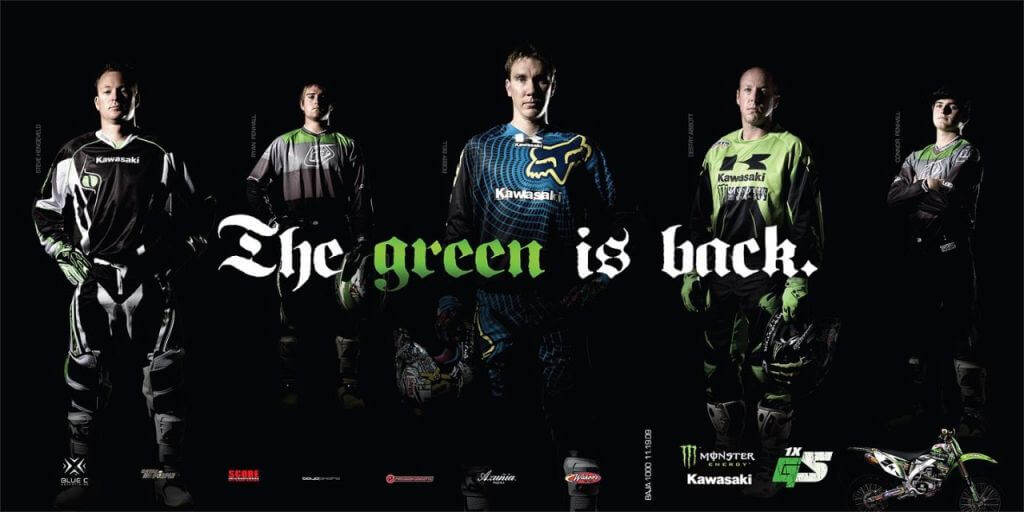
ORR: Explain one of your fondest memories during your racing career, or anything that may have stuck out the most?
Probably my fondest racing memory was the 2007 Baja 1000. It was the last race of my season, which was already successful, as I’d finished 3rd in the WORCS championship, and Kendall and I had won the first two SCORE races that year. We also had the dream team for the 1000, with Steve Hengeveld (arguably the best night rider of his generation) and Johnny Campbell joining myself and Kendall for the SCORE finale.
It was also the first year that KTM was making a decent factory-backed effort in Baja, so the level of competition was elevated. I had two stints in the race, and I don’t think I could have ridden them much better. Bruce Ogilvie was in the helicopter watching over me, and after the race I remember him telling me that it was near perfection watching me ride and hit my lines. I stayed safe, rode fast and hard, gave my teammates a perfect bike so they could do the same, and we won the 40th anniversary Baja 1000 overall (which was extended to 1,200 miles I think?), beating all of the Trophy Trucks and giving the CRF450X it’s first 1000 victory. It was as perfect as a race could be executed on one of off-road’s biggest stages.

ORR: You had a terrible crash several years ago, can you touch on that a bit. The recovery process, and how it may have affected you?
July 12, 2015 is a date I now recognize as the beginning of the end of my professional racing career. I was on top of the world at the time, as race wins were coming with seeming ease. I was enjoying training, riding, racing, was mentally strong and felt like I could go on winning races for decades in that form. Then the SoCal MX on July 12th happened. I’d trained hard the day before, doing two CrossFit workouts, then didn’t take the time to recover the best that I could the night before. I entered three classes the day of the race, two classes with two 10-min motos, plus the two-moto, 20-min, plus-a-lap pro class.
After the first round of motos, which culminated with the pro race, my next moto (the fourth of my day so far) was straight away. After pushing to my limit in the pro race, at Glen Helen, where it was at, or near 100-degrees if memory serves, I crossed the checkered and went straight back to the starting line, where my dad had saved a spot. Just before the gate was going to drop, my bike started puking coolant, which frazzled me a little. But the gate dropped and over the first couple laps, I was challenging for the lead. Then, just before the finish straight, my bike popped and I remember thinking, ‘I don’t want the bike to cut out, if it’s overheating, and crash, so I’ll just pull off.’ When I thought that, because I was already run down, I wasn’t focusing on where I was on the track. I remember heading to the big scrub jump just before the finish, thinking it was the finish-line table and I was just going to seat bounce it nice and easy, land and smoothly ride off the track.
In actuality, I ended up seat-bouncing that huge “scrub single”. I then came down from what seemed like a mile high, facing the finish-line table. When I did, the middle of my chin came down on the edge of the steel crossbar, where the bar pad had ended. The impact blew five teeth out of my mouth on impact. I then had four more teeth pulled at the emergency in Loma Linda, where the surgeon did an absolutely masterful job stitching me up—the laceration from my chin up through my lower lip was gruesome.
Though I suffered only a couple minor fractures to my jaw, and a slightly tweaked ankle from the impact, this was definitely one of the toughest injuries for me, from an emotional standpoint. My smile was my favorite personal feature, and losing nine of my front teeth forever lost that. I was fortunate to have such a strong wife by my side every step of the way. She kept my spirits off the floor even at my lowest. The eventual surgeries—bone grafting from my hip, then tissue grafting from the roof of my mouth and finally installing three implants each in my top and bottom jaw before affixing my new permanent smile—were tough at times, but honestly, spending five years without teeth taught me so much about self-image, confidence and acceptance, that I’m oddly grateful for it. It also helped change my thinking pattern to start considering what life would or could look like after racing, which was a blessing.

ORR: Life after professional racing, how have you managed to stay involved. Talk a bit about Precision Concepts Racing, what are your future plans with it?
There’s no doubt I’ve been absolutely fortunate that my dad started Precision Concepts and built it into a successful motorcycle business. It’s one of the main reasons I was afforded continuous opportunities to find success racing, and how I’ve been able to stay involved afterward. We’ve definitely made a great team in many respects. My dad is such a technical nut who loves to figure out how things work and how to make them better. His obsession is suspension and the handling of the bike. He’s groomed me into a pretty good test rider, who understands the language and how to translate bike feel into something approximating a comprehensible explanation. I believe this has allowed us to create a solid platform, or baseline setting, for the racers on our team that we then fine tune for their personal idiosyncrasies on the bike. It’s been a great benefit for the team, and any customers of the shop. Of course, my dad’s obsession with improving suspension specs, to achieve better handling, bleeds into everything he does and every aspect of the shop’s services.
I enjoy the management side of things more, like sponsor-relations, I enjoy writing, some graphic design, race reports, and trying to innovate ways to create value as a race team so we can keep garnering support and improving our effort. There’s definitely a side of me that feels like this industry gave me such an opportunity to have fun, while earning a living doing something I love, that I want to be able to offer that opportunity to the generation after me, and God-willing, many more after them.
ORR: Outside of PCR what’s next for Robby Bell?
Outside of the team and helping at PCR, I’m enjoying dad-life and spending as much fulfilling time as I’m able to with my family. There’s plenty I want to accomplish personally and professionally, outside the industry as well. I’ve definitely learned at least as much about myself in the four years since becoming a dad as I did in the thirty years prior to that. I’ve also learned that time only seems to speed up the older I get. Though in some respects I have a long time to continue to improve myself, for the benefit of me, my family and my greater community, I’ve learned that time can pass so quickly that I’ll look back and wonder what more I might have done had I been living more intentionally, or striven to be even more than I already am. It’s something that’s begun driving me harder from a professional and personal standpoint: I don’t want to look back in 50 years and think that I could have been more than what I became. More abstractly, I think our communities need each of us taking responsibility and striving to become better than what we are so we can make life for those around us better. I don’t think there’s a much more important way to spend your time, honestly, than becoming a better version of yourself so those around you can be and become better. That’s where I think at least some, if not much, of life’s fulfillment comes from.



